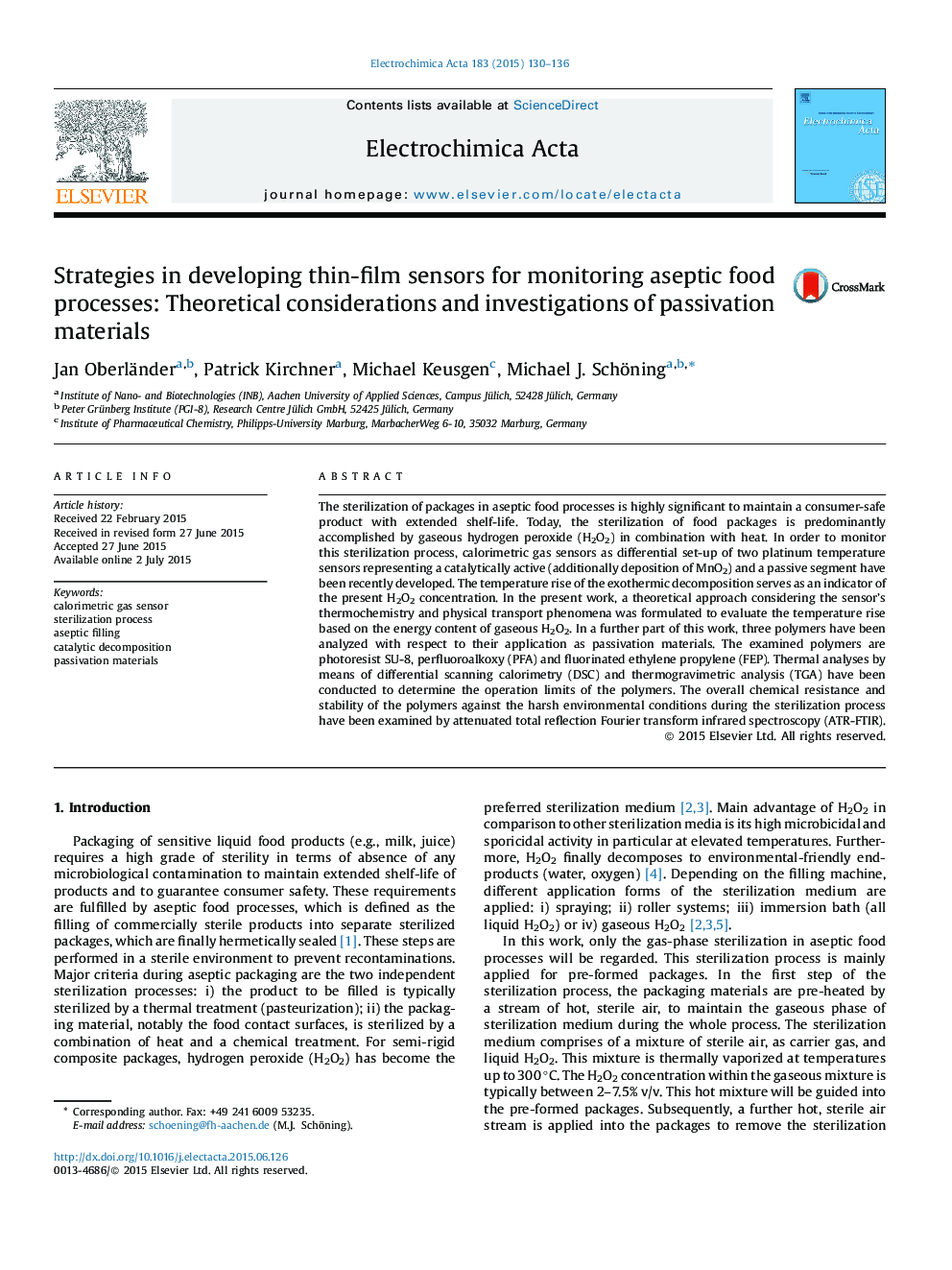| Article ID | Journal | Published Year | Pages | File Type |
|---|---|---|---|---|
| 183523 | Electrochimica Acta | 2015 | 7 Pages |
The sterilization of packages in aseptic food processes is highly significant to maintain a consumer-safe product with extended shelf-life. Today, the sterilization of food packages is predominantly accomplished by gaseous hydrogen peroxide (H2O2) in combination with heat. In order to monitor this sterilization process, calorimetric gas sensors as differential set-up of two platinum temperature sensors representing a catalytically active (additionally deposition of MnO2) and a passive segment have been recently developed. The temperature rise of the exothermic decomposition serves as an indicator of the present H2O2 concentration. In the present work, a theoretical approach considering the sensor’s thermochemistry and physical transport phenomena was formulated to evaluate the temperature rise based on the energy content of gaseous H2O2. In a further part of this work, three polymers have been analyzed with respect to their application as passivation materials. The examined polymers are photoresist SU-8, perfluoroalkoxy (PFA) and fluorinated ethylene propylene (FEP). Thermal analyses by means of differential scanning calorimetry (DSC) and thermogravimetric analysis (TGA) have been conducted to determine the operation limits of the polymers. The overall chemical resistance and stability of the polymers against the harsh environmental conditions during the sterilization process have been examined by attenuated total reflection Fourier transform infrared spectroscopy (ATR-FTIR).
